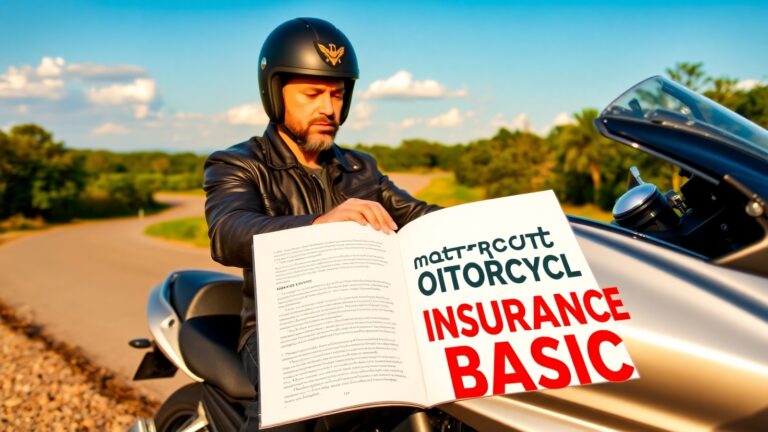Motorcycle Insurance Basics: A Simple Guide for Riders
Riding a motorcycle brings a sense of freedom and adventure, but it also comes with responsibility. One of the most important steps in protecting yourself and your bike is having the right insurance. If you’re new to motorcycling or just reviewing your options, understanding the basics of motorcycle insurance can help you make informed decisions without feeling overwhelmed.

Why Motorcycle Insurance Matters
Unlike cars, motorcycles offer little physical protection in an accident, making insurance essential. A good policy helps cover:
- Repairs or replacement if your bike is damaged or stolen.
- Medical expenses for you or others involved in an accident.
- Legal fees if you’re liable for injuries or property damage.
Most states require at least a minimum level of coverage, but even if yours doesn’t, having insurance is a smart way to ride with peace of mind.
Common Types of Motorcycle Insurance Coverage
Insurance policies can be tailored to fit different needs. Here are the most common types of coverage:
1. Liability Insurance
- Bodily Injury Liability: Covers medical costs for others if you’re at fault in an accident.
- Property Damage Liability: Pays for damage you cause to someone else’s property.
- Why it’s important: It’s usually required by law and protects you from high out-of-pocket costs.
2. Collision Coverage
- Helps pay for repairs to your bike after an accident, regardless of fault.
- Good to know: If your bike is financed, lenders often require this.
3. Comprehensive Coverage
- Covers non-collision incidents like theft, vandalism, fire, or weather damage.
- Helpful for: Riders who park their bikes outside or in high-risk areas.
4. Uninsured/Underinsured Motorist Coverage
- Protects you if you’re hit by a driver with little or no insurance.
- Why consider it: Many drivers are underinsured, leaving you vulnerable.
5. Medical Payments (MedPay) or Personal Injury Protection (PIP)
- Helps with medical bills for you and your passenger, regardless of fault.
- Useful if Your health insurance has high deductibles.
6. Accessories and Custom Parts Coverage
- Covers aftermarket upgrades like exhaust systems, saddlebags, or custom paint.
- Important for: Riders who personalize their bikes.
Factors That Affect Your Premium
Insurance costs vary based on several factors, including:
- Your bike’s make, model, and age (sport bikes often cost more to insure than cruisers).
- Your riding experience and driving record (safe riders typically pay less).
- Where you live (urban areas with higher theft rates may mean higher premiums).
- How often you ride (seasonal vs. year-round riders may see different rates).
Tips for Lowering Your Insurance Costs
- Take a Motorcycle Safety Course – Many insurers offer discounts for certified riders.
- Bundle Policies – Combining auto and motorcycle insurance with the same provider can save money.
- Choose a Higher Deductible – A higher out-of-pocket cost in case of a claim can lower premiums.
- Store Your Bike Securely – Keeping it in a garage or using anti-theft devices may reduce rates.
Final Thoughts
Motorcycle insurance doesn’t have to be complicated. By understanding the basics, you can choose coverage that fits your riding style and budget. Whether you’re a daily commuter or a weekend explorer, the right policy ensures you can enjoy the ride with confidence.
Before you hit the road, take a moment to review your options—your future self will thank you. Safe travels!
